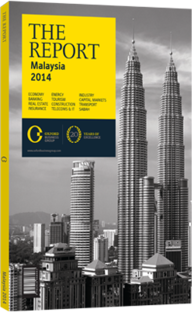Looking abroad: A push is under way to increase visitors from further afield
Though a strong showing by Malaysia’s tourism industry in the first three months of 2014 may have been offset by an expected drop-off in arrivals from China, officials and travel bodies remain confident that any cooling in sentiment from the mainland will ease by the latter part of the year, giving the sector a lift in the final quarter. The tourism industry posted arrivals up 10% year-on-year for the first quarter of 2014, with just over 7m visitors, up from 6.5m for the same period in 2013, according to data issued by the Immigration Department of Malaysia in mid-June.
Fellow ASEAN members continued to provide the bulk of Malaysia’s inbound visitors, contributing 72% of the total – 5.1m arrivals – with Vietnam, Thailand, Cambodia, the Philippines and Singapore all showing double-digit increases for the quarter. Indonesia, the second-largest source of tourists, delivered 676,000 passengers, representing a 7.3% increase.
Malaysia will need to maintain this rate of growth if it is to reach the aim of 36m annual arrivals set by the government for 2020, more than 10m up on the 25.7m arrivals recorded in 2013. The government is also looking to greatly expand tourism revenue, targeting earnings of $52bn annually by the end of the decade, more than two and a half times the 2013 total of $20.3bn.
Headwinds Cooling Chinese Interest
Despite the good performance, the real proof of the resilience of the tourism sector will come with the release of the second-quarter figures, with a number of factors set to have a negative impact on performance. Recent events have hurt Malaysia’s standing as a tourism destination in the eyes of many potential travellers from China. Some estimates put the drop in arrivals from mainland China at around 40% since March 2014, putting at risk the industry’s target of hosting 2m Chinese tourists in 2014 compared with 1.4m arrivals in 2013.
Tourism and Culture Minister Nazri Aziz told Parliament in June that a total of 76 flights to Kota Kinabalu, the capital of Sabah, from China were cancelled recently in response to three kidnapping cases on the east coast of the Malaysian state in three months. Other factors that could impact Chinese visitor numbers is the simmering tension between Beijing and a number of countries in the region, including Malaysia, relating to territorial disputes in the South China Sea and elsewhere, in addition to the tragedy of Malaysia Airlines flight MH370, which disappeared March 8 en route from Kuala Lumpur to Beijing. As a result, some Chinese tourists may look further when planning their holidays, away from states with which their government is at odds.
Promotional Push
Malaysia is now moving to shore up its Chinese market. Tourism authorities are again starting to increase advertising activities and attend trade fairs. Speaking in Hong Kong in June 2014, Azizan Noordin, deputy director-general of promotions for Tourism Malaysia, said he remained confident Chinese arrivals would hit 2m, representing a 15% increase year-on-year from 2013. Echoing these comments, the Malaysia-Chinese Tourism Association, a group representing Malaysian Chinese travel agents, predicts that arrivals from China are likely to rebound in the third quarter and into the last three months of 2014, while officials are confident year-end targets will be met.
In For The Long Haul
Visitor numbers from China may well fall short of expectations for 2014, but this gap may be bridged by holidaymakers from other countries. For example, Malaysia’s tourism appeal is spreading further, with visitors from countries such as Australia a target. Though only representing a fraction of the overall total, long-haul visitors from countries in Europe or North America added significantly to Malaysia’s arrival numbers, with 500,000 landing in the first quarter of 2014, according to the Immigration Department. While only 8% of all arrivals, these long-haul markets represent an area of strong growth potential, one that has been given increased support by improved flight connections to Europe in particular.
Another more distant market that both the government and operators are working to expand is the Middle East and other predominantly Muslim countries.
You have reached the limit of premium articles you can view for free.
Choose from the options below to purchase print or digital editions of our Reports. You can also purchase a website subscription giving you unlimited access to all of our Reports online for 12 months.
If you have already purchased this Report or have a website subscription, please login to continue.

